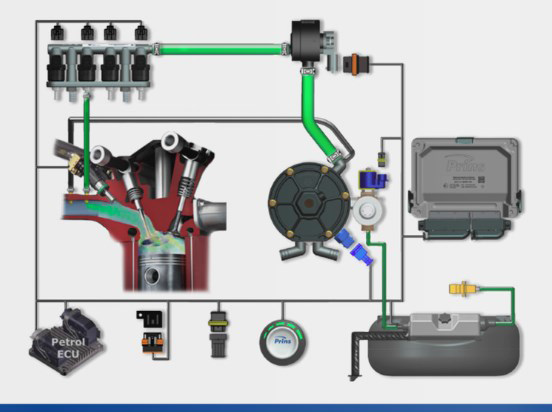- +61 39311 8913
- sales@prinsaustralia.com.au
- Mon - Thur: 8:00-4:30 Fri: 8:00-4:00
Basics of Conversion
Home » Basics of Conversion
Get a quote to convert your car to LPG using quality Prins products
Some good reasons to run your vehicle on LPG.
What you're covered for.
There are 2 main types of LPG system being fitted in the market today. These are LPG injection, sometimes refered to as 3rd and 4th generation LPG systems, and venturi/mixer systems which are sometimes referred to as 1st generation LPG systems.
First and second generation LPG systems use venturis or mixers to introduce the LPG to the engine and have been around for a long time and have served the LPG industry well, though there are several benefits gained by using an injection system.
First generation LPG systems have open loop (manually set) fuel control, while second generation systems add electronic control to the system and use feedback from an exhaust oxygen sensor to adjust fuelling.
There are 2 types of LPG injection systems, vapour LPG injection (third generation LPG systems) and liquid LPG injection (fourth generation LPG systems). As the names suggest, the LPG is injected into the engine in its gaseous form in vapour injection and in its liquid form in liquid injection.
Also know as an 'LPG converter', 'LPG vaporiser' or an 'LPG vaporiser/regulator'. This unit converts the liquid LPG to vapour LPG. This uses energy and as such the LPG regulator is heated with engine coolant. The LPG regulator delivers the LPG vapour to the venturi or mixer at a set regulated pressure, close to atmospheric pressure.

A computer that controls all the LPG components. It operates in a master/slave relationship with the original petrol ECU. It reads the petrol injection signals and then uses this to calculate how much LPG to inject and when. The LPG ECU controls all the LPG safety systems, i.e. closes all the solenoid lock off valves if the engine isn't running.
These are solenoid operated valves that are controlled by the LPG ECU. They are connected to the inlet manifold with hoses to direct the LPG into the engine.
Like the LPG regulator in the first and second generation systems the Vapour injection regulator converts the liquid LPG to vapour LPG and is heated with engine coolant. It delivers the LPG vapour to the injectors at a set regulated pressure. The LPG pressure used in vapour injection systems is much higher than for venturi/mixer systems.
An in dash switch added to the vehicle to allow the engine to run either on LPG or petrol at the push of a button. • Incorporates an LPG fuel gauge